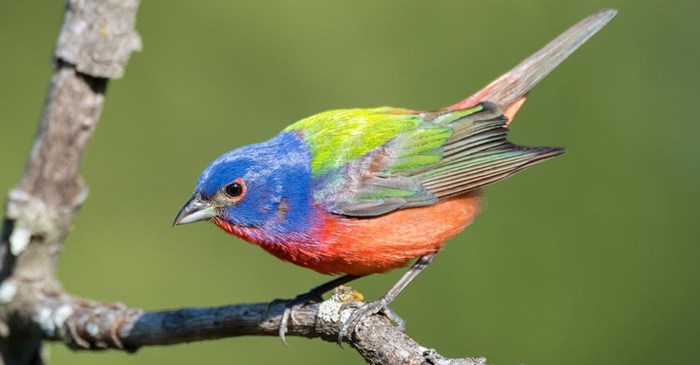When reading up on your favorite bird species, you may notice a Latin term that shows up repeatedly: passerine (or Passeriformes). We see this because, like any creature of the earth, the birds we enjoy seeing at the feeder every day are organized by scientists into categories. This is known as the taxonomic ranking, and passerine is the order in which we find many of our favorite backyard birds. Passerine is derived from the word passer, the Latin word for sparrow.
At 6,000 species, passerine is the largest order of birds in the world.
Some of the characteristics passerine birds share include:
- All passerines have feet that clutch a perch. Their toes look like small talons with three facing forward and one facing backward, all meeting at a single point.
- All passerine young are altricial, which means upon hatching, they are helpless, with eyes closed and few feathers. (The other end of the spectrum is precocial. Think of the open-eyed, on-the-move hatchlings that belong to non-passerines like ducks and chickens.)
- We often refer to passerines as “songbirds.” Many male species do sing melodies to warn off rivals and attract mates. However, considering the raucous calls of the crow and Blue Jay, it’s clear that “songbird” isn’t the most accurate catch-all word.
- Many passerines are marked with brightly colored feathers and/or distinct markings. They are sexually dimorphic, in which males have more colorful, showier markings while females (and juveniles) are subdued and camouflaged.
Knowing the taxonomic hierarchy of a bird species is more than a scientific pursuit. For people who love watching birds, delving into the subcategories of family, genus and species can be rewarding.
Get to know the birds in your neighborhood
Learning to identify birds by sight and sound helps us get in touch with the natural world. Filling your feeders with Lyric Fine Tunes No Waste Wild Bird Mix is a surefire way to draw a crowd because we use fresh, high-quality ingredients that are bird tested and approved. Enjoy no-mess beneath your feeders with this popular no waste, filler-free mix.
